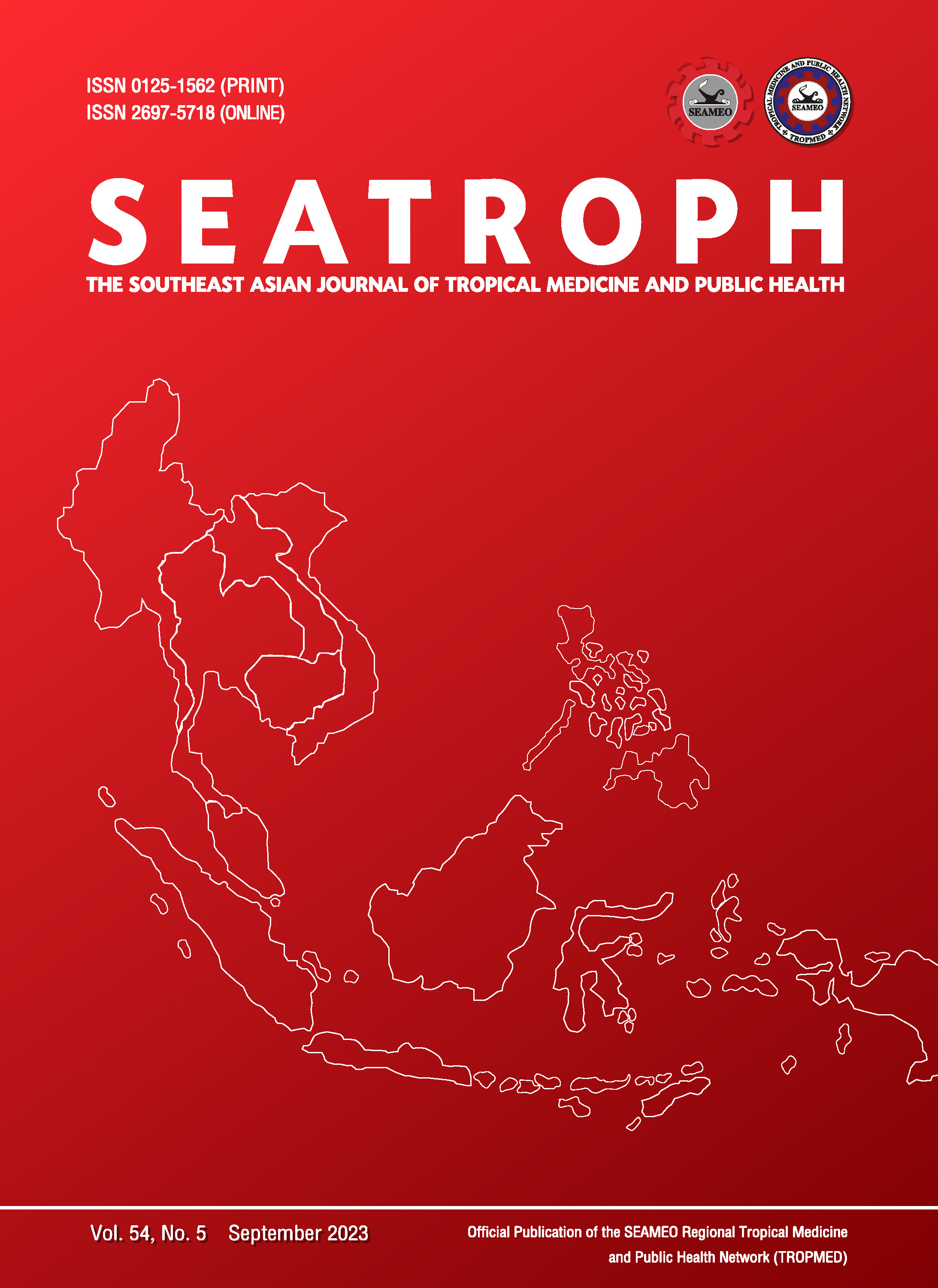ANALYSIS OF SPATIAL AND TEMPORAL PATTERNS OF COVID-19 INCIDENCE IN THAILAND
Keywords:
COVID-19 incidence rate, Spatial-temporal, Log-linear model, Patterns, ThailandAbstract
Knowing the variations in the incidence and locations of coronavirus disease 2019 (COVID-19) over time can enable us to better understand its epidemiology. In this study we aimed to determine COVID-19 incidence patterns over space and time and identify factors significantly associated with those patterns in Thailand in order to inform efforts to control this disease in Thailand. We obtained data regarding the COVID-19 cases reported daily to the Department of Disease Control, Ministry of Public Health (MoPH) for Thailand during January 2020-April 2022. We pooled the daily cases into monthly cases and separated them by gender, age group, province and year. The COVID-19 incidence rates per 1,000 population were calculated. A log-linear model was used to investigate COVID-19 incidence patterns over time and space in Thailand and identify factors significantly associated with these cases. Subjects were grouped by age into 8 groups. A total of 3,334,331 subjects were included in our study. The median COVID-19 incidence was 1.27 (average: 3.51; range: 0-105.33) cases per 1,000 population per month. The groups with significantly higher incidences of COVID-19 cases per 1,000 population in our study were males aged 20-29 years (incidence: 6.17, 95% confidence interval (CI): 5.88-6.48, p<0.001), males aged 30-39 years (incidence: 5.02, 95% CI: 4.96-5.46, p=0.003), males aged 40-49 years (incidence: 3.95, 95% CI: 3.77-4.15, p=0.050), females aged 20-29 years (incidence: 4.83, 95% CI: 4.60-5.07, p=0.010) and females aged 30-39 years (incidence: 4.18, 95% CI: 3.99-4.39, p=0.043). There were five temporal incidence wave peaks during the study period: April 2020 (incidence: 0.037, 95% CI: 0.033-0.041, p<0.001), January 2021 (incidence: 0.057, 95% CI: 0.052-0.063, p<0.001), June 2021 (incidence: 0.387, 95%CI: 0.367-0.407, p<0.001), August 2021 (incidence: 5.23, 95% CI: 4.99-5.48, p<0.001) and March 2022 (incidence: 12.19, 95% CI: 11.63-12.77, p<0.001), with the latter two being greater than the overall average. Twenty-one provinces in central Thailand and 7 provinces in the southern Thailand had significantly higher COVID-19 incidence rates than the average. All provinces in northeastern Thailand and in northern Thailand, except Tak Province, had incidence rates lower than average. In summary, we found significantly higher than average incidence rates of COVID-19 among males aged 20-49 and females aged 20-39 years and significantly higher than average incidence rates during August 2021, February, March and April 2022 and significantly higher than average incidence rates in central and southern Thailand. We conclude, prevention efforts should focus on these age groups and genders in central and southern Thailand in order to have the greatest preventive benefit. Further studies are needed taking into account other factors, such as vaccinations and environmental factors to determine if other factors of COVID-19 incidence are relevant, especially since the advent of vaccinations to prevent COVID-19.
Downloads
Published
Versions
- 2024-01-19 (2)
- 2024-01-19 (1)




